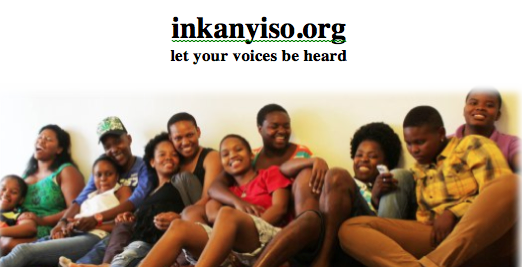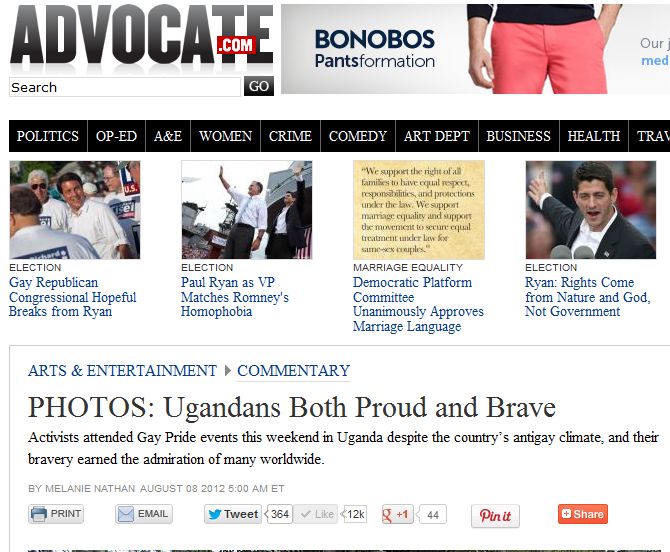 Wednesday, 25 July 2012 (Washington, D.C., United States)—Women are still bearing the burden of the HIV/AIDS three decades into the epidemic and need to be a priority in research, care, treatment at all levels, experts told delegates today at the XIX International AIDS Conference (AIDS 2012) taking place in Washington, D.C. this week.
Wednesday, 25 July 2012 (Washington, D.C., United States)—Women are still bearing the burden of the HIV/AIDS three decades into the epidemic and need to be a priority in research, care, treatment at all levels, experts told delegates today at the XIX International AIDS Conference (AIDS 2012) taking place in Washington, D.C. this week.
It estimated that out of the 34 million adults worldwide living with HIV and AIDS half are women. Generally women are at a greater risk of heterosexual transmission of HIV. Biologically women are twice more likely to become infected with HIV through unprotected heterosexual intercourse than men. In many countries women are less likely to be able to negotiate condom use and are more likely to be subjected to non-consensual sex. Women’s childbearing role means that they have to contend with issues such as mother-to-child transmission of HIV. The responsibility of caring for AIDS patients and orphans is also an issue that has a greater effect on women.
“We cannot even begin to talk about ending AIDS when so much of the impact of the HIV/AIDS epidemic continues to be so heavily skewered towards women,” said Dr. Diane Havlir, AIDS 2012 U.S. Co-Chair and Professor of Medicine at the University of California, San Francisco. “The great strides we have seen in reducing mother to child transmission through antiretroviral drugs need to be replicated elsewhere to alleviate the female burden of this epidemic – new preventative technologies such as post-exposure prophylaxis and microbicides are going to be the key.”
A regional session will be held today on Middle East and North Africa: Getting HIV and AIDS down to zero in the Arab States. It continues a focus of the conference on countries and regions that are key to ending the epidemic. The role of emerging countries such as South Africa, Brazil, India and China in their leadership of the epidemic was the subject of a special roundtable session yesterday. The Roundtable featured comments from development economist Jeffrey Sachs with high-level speakers from the four emerging powers offering comments on their countries’ accomplishments and look to their future leadership in the epidemic.
“The response to the HIV/AIDS epidemic in these countries has brought about some major innovations in their health systems, and in the case of India and Brazil in particular spectacular results in the generic production of antiretroviral drugs,” said Dr. Elly Katabira, AIDS 2012 International Chair and President of the International AIDS Society (IAS).” These countries re rightfully shaping their own domestic AIDS policies with less dependence on the international community but at the same it is be hoped that in the future they will play leading roles in the funding of international treatment , care and research programs.”
Wednesday Plenary Session
Turning the Tide on Transmission
Speakers:

English: Photo of Geeta Rao Gupta. She is president of the International Center for Research on Women in Washington, DC. (Photo credit: Wikipedia)
Barton Haynes, Director of the Duke Human Vaccine Institute and the Center for HIV/AIDS Vaccine Immunology (CHAVI), The Way Forward For Development of an HIV-1 Vaccine
An overview of the problems that have prevented successful vaccine development and the strategies that the field is taking to overcome these problems. New finding have energized the HIV vaccine field. These findings include identification of immune correlates of infection risk in the RV144 Thai efficacy trial, the elucidation and characterization of many transmitted founder viruses, the discoveries of new HIV broad neutralizing antibodies, and insights into why broadly neutralizing antibodies are so difficult to induce. The field is excited that these findings can provide clues to speed the development of a preventive vaccine.
Chewe Luo, Senior Adviser HIV/AIDS, UNICEF, Turning the tide on children and adolescents
The Global Plan to eliminate new HIV infections in children by 2015 and keeping mothers healthy has resulted in renewed commitment globally and countries have developed costed country plans to accelerate action. Since the breakthrough scientific study, the PACTG 076 which demonstrated that antiretroviral drugs given to mother and baby can reduce mother to child transmission by two thirds, scientific evidence has grown witness the new update from WHO supporting a test and treat strategy for HIV positive pregnant women, i.e. to treating all pregnant women regardless of CD4 count. With this strategy, we can optimize the health of mothers and markedly reduce both mother to child transmission and sexual transmission between sero-discordant couples.
Linda Scruggs, Consultant,Making Women Count: A Comprehensive Agenda
The inclusion of women is a priority in research, care, treatment at all levels. There are gender-specific issues that coalesce to create unique vulnerabilities experienced in common by women across the globe, yet distinct from men’s experience in the US and globally, that cause a growing number of women becoming infected. Reviews power dynamics and gender-based violence, particularly as causes and consequences of HIV transmission to women and their lived experiences. There are key opportunities and benefits to the community by ensuring not only do women have access to testing, care and treatment, but that they are a part of the planning and research discussion that ultimately support and end to AIDS.
Geeta Rao Gupta, Deputy Executive Director UNICEF, Turning the Tide for Women and Girls
The global community has the opportunity to turn the tide for adolescent girls. The challenge is to harness these resources through strong systems that can reach those adolescents in greatest need. There has been substantial progress made in recent years but there is an unfinished agenda in the AIDS response – the persistently high rates of infection among adolescents, particularly girls. Of the 2.2 million adolescents living with HIV in 2011, 1.3 million are adolescent girls and 890,000 are adolescent boys. This fact reflects pervasive social norms that perpetuate gender inequality and harmful practices, such as child marriage, transactional sex and sexual violence, heightening girls’ vulnerability to HIV.
Related articles
- Scientists see AIDS vaccine within reach after decades (vancouversun.com)
- First International AIDS Conference to be held in the US over 2 decades – Critical moment in the fight against HIV/AIDS (blogblooms.wordpress.com)




















 PoochParkWear customizes hoodies and t-shirts, the good, the naughty, the in between, whether proud or quirky let them be seen. We also offer biker jackets, croc or pleather collars, a variety of collar charms, and our special Zinja beaded collars made by a co-op of HIV-positive South African women, the Sisonke women who weave the beads onto the collars.
PoochParkWear customizes hoodies and t-shirts, the good, the naughty, the in between, whether proud or quirky let them be seen. We also offer biker jackets, croc or pleather collars, a variety of collar charms, and our special Zinja beaded collars made by a co-op of HIV-positive South African women, the Sisonke women who weave the beads onto the collars.

Trackbacks/Pingbacks
[…] vaccine: New finding have energized the HIV vaccine field development and the strategies the field is taking to overcome these […]